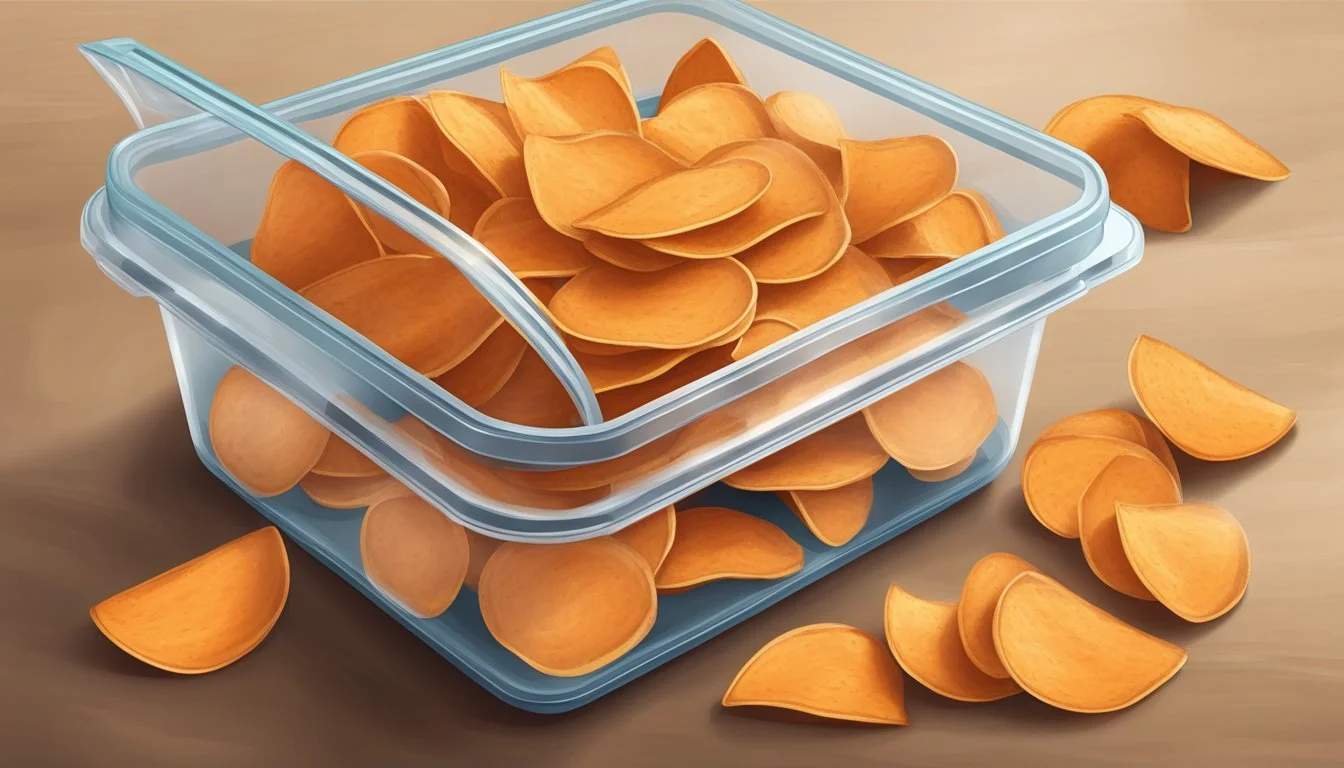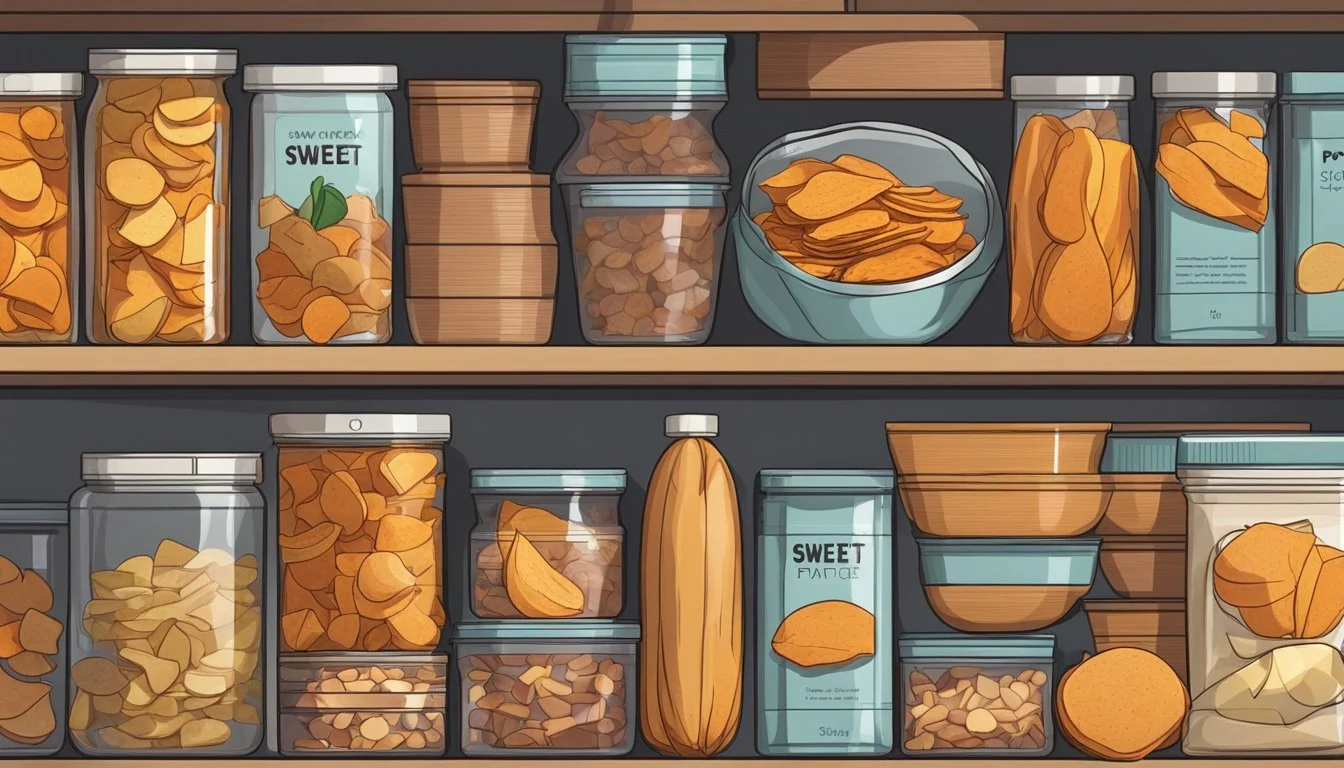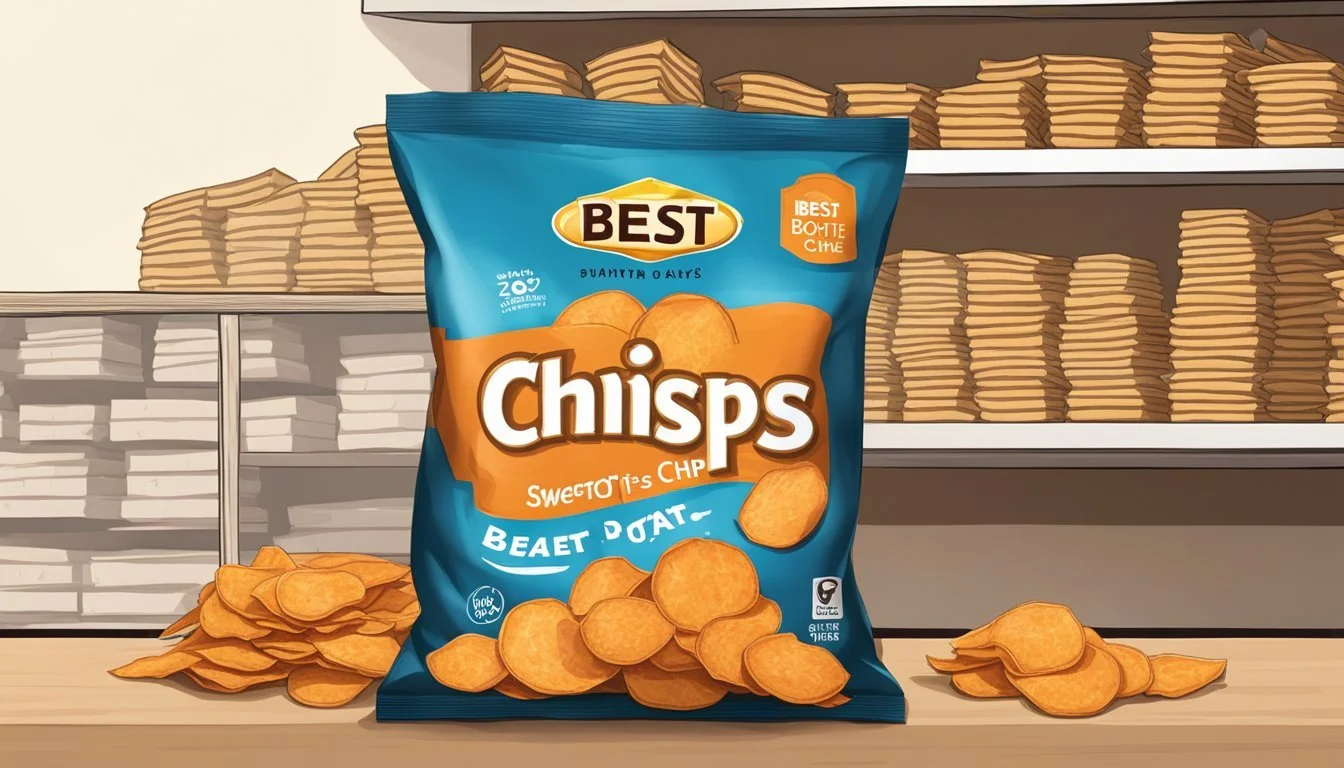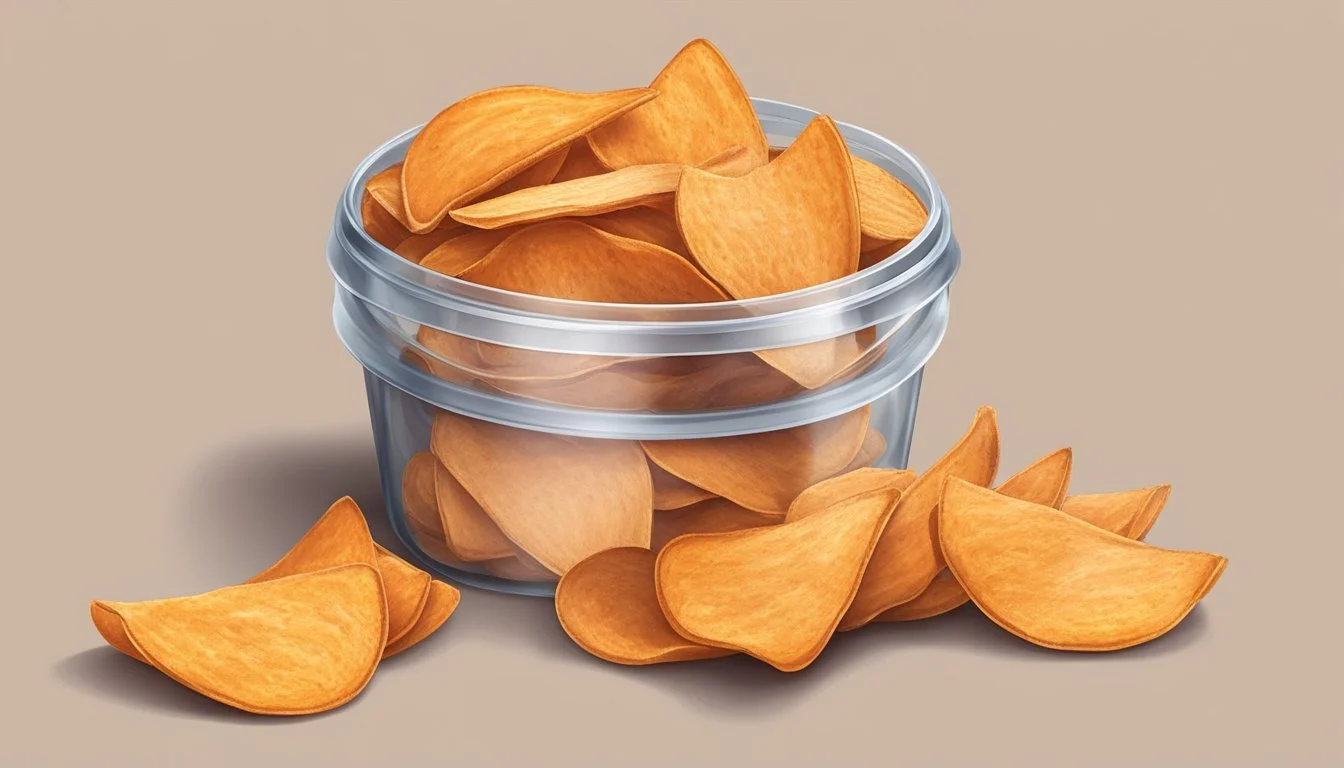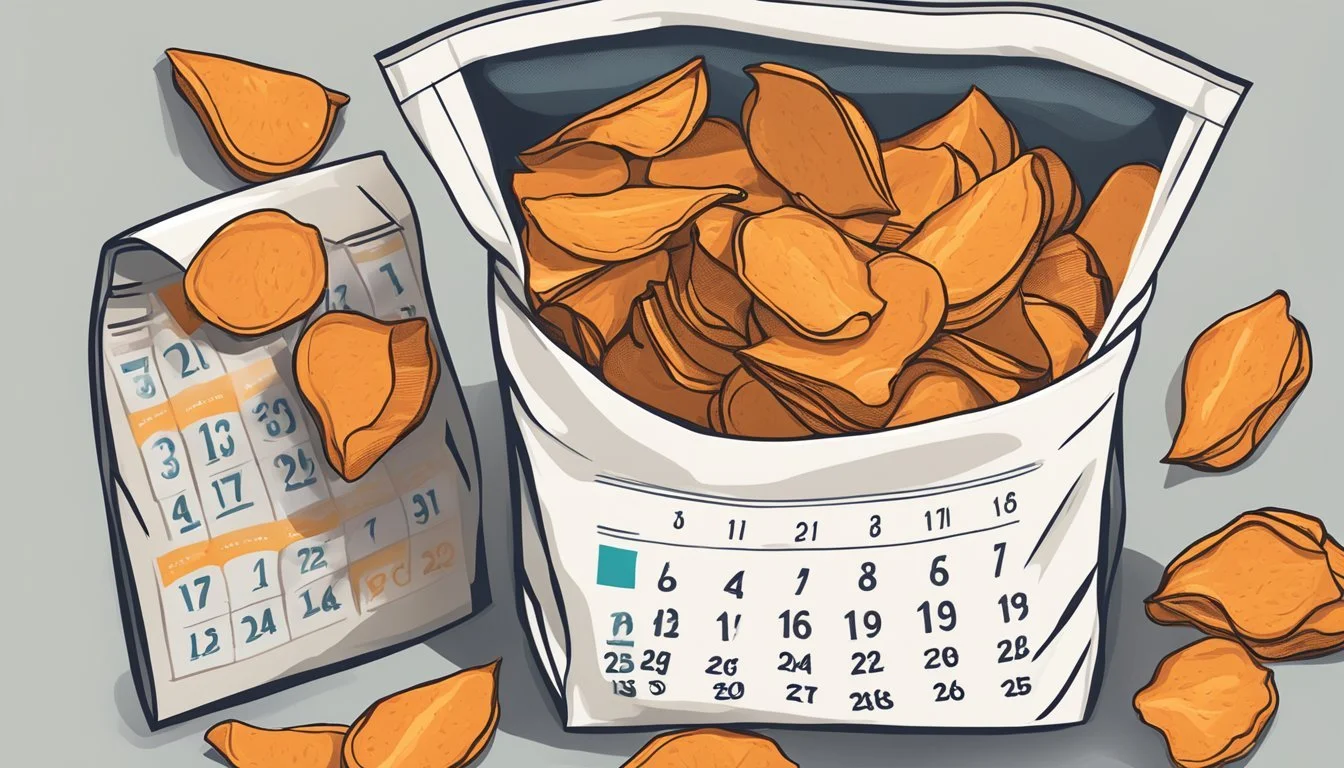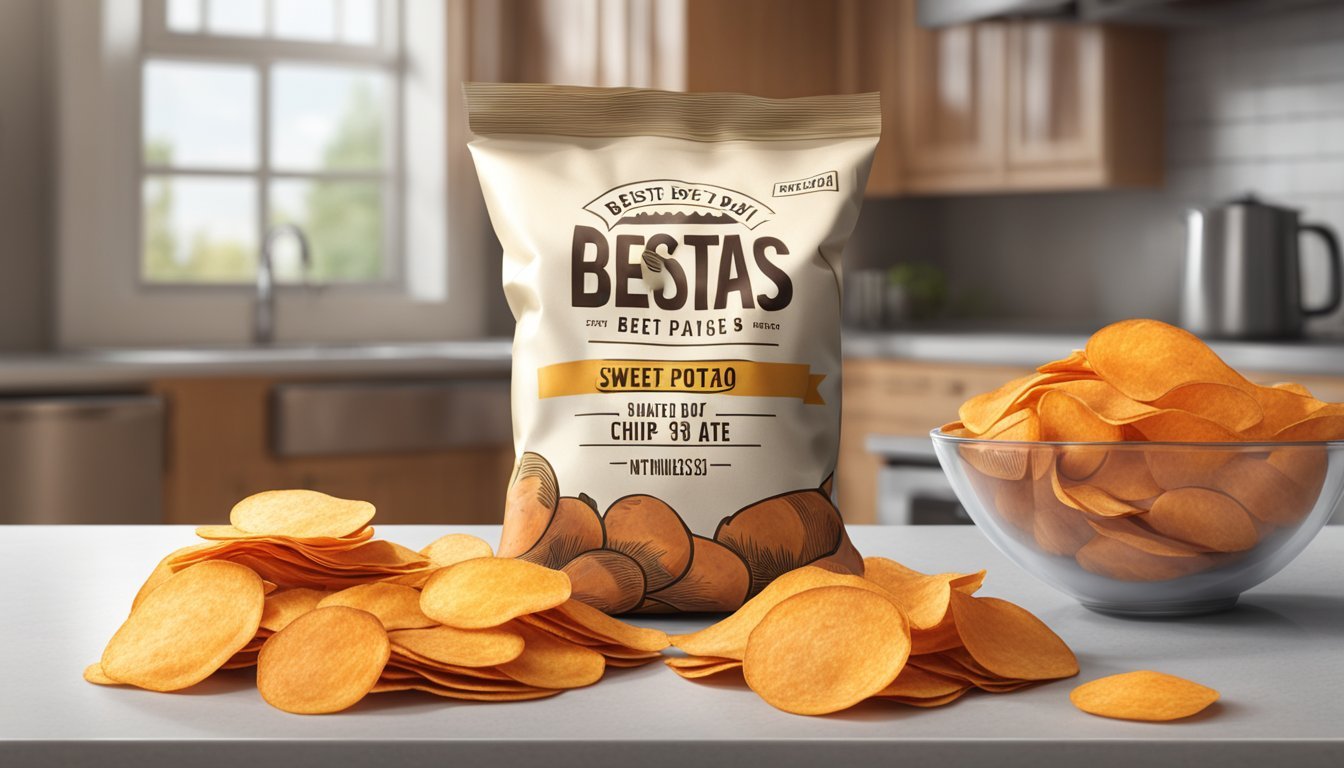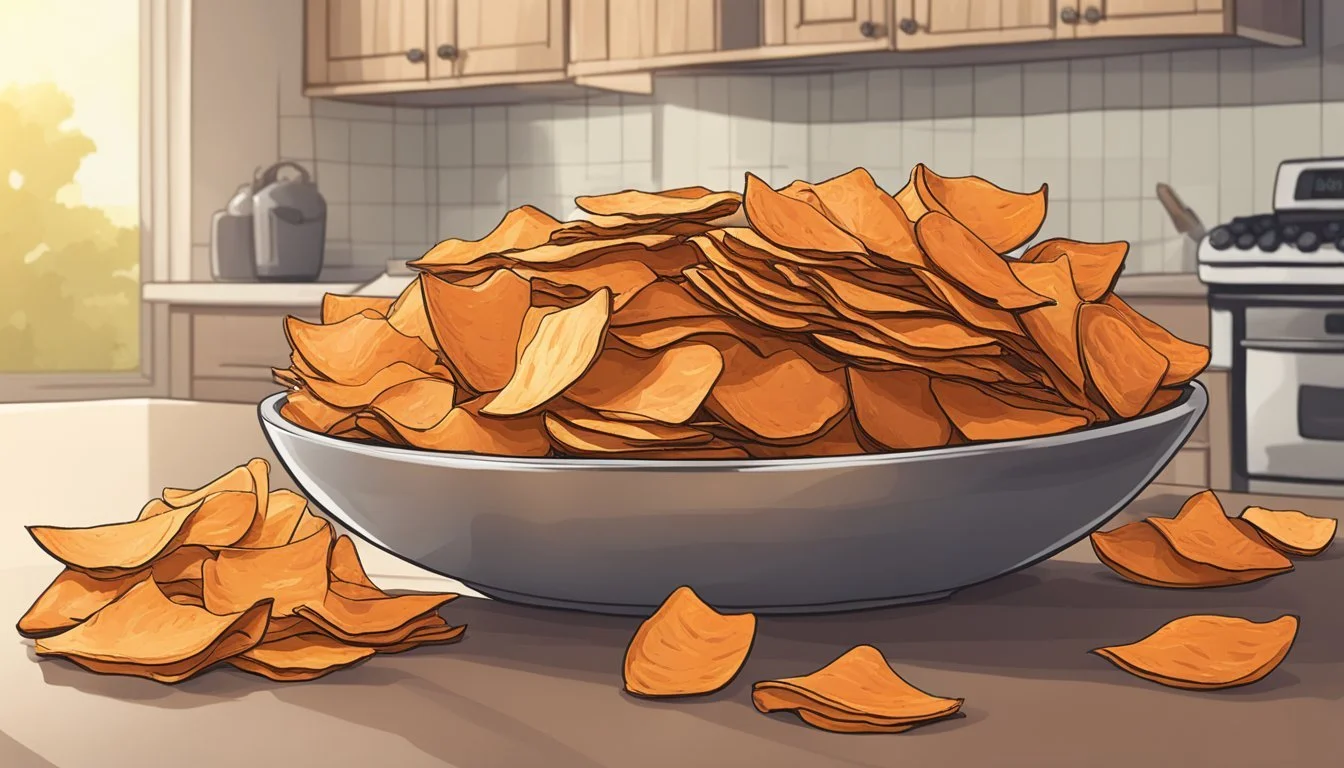How Long Do Sweet Potato Chips Last?
Shelf Life and Storage Tips
Sweet potato chips offer a healthier alternative to traditional potato chips, and their shelf life is a common question among consumers. Proper storage techniques can greatly impact the longevity of these snacks. When kept in an airtight container, sweet potato chips can maintain their freshness and crispness for about 1-2 weeks.
Factors such as the presence of moisture, exposure to air, and temperature can influence how long sweet potato chips last before they begin to stale or spoil. Ensuring that they are stored in a cool, dry place away from sunlight helps preserve their quality for as long as possible.
Understanding Sweet Potato Chips
Sweet potato chips offer a nutritious alternative to traditional potato chips, infusing the snack experience with vitamins and fiber. They cater to various dietary needs while maintaining a delicious taste.
Sweet Potatoes vs. Regular Potato Chips
Sweet potatoes (What wine goes well withpotatoes?) are a distinct variety of tubers compared to the regular white potatoes. Here are the key differences:
Sweet Potatoes: They are rich in fiber, vitamins A and C, and iron. These nutrients play a vital role in promoting digestive health, vision, and immune function.
Regular Potato Chips: Typically lower in vitamins, they are often fried, which can increase unhealthy fat content.
Benefits of Sweet Potato Chips
Sweet potato chips provide several advantages over their regular potato counterparts:
Nutritional Value: Sweet potato chips contain a higher concentration of vitamins and antioxidants.
Diet-Friendly: They often fit into dietary guidelines for Whole30 and Paleo diets due to their minimal processing and natural ingredient profile.
Storage Fundamentals
Proper storage of sweet potato chips is essential to maintain their crispness and flavor. Understanding the importance of temperature, light conditions, air circulation, and moisture control can significantly prolong the shelf life of these delicious snacks.
Optimal Temperature and Light Conditions
Sweet potato chips should be stored in a cool and dark environment to prevent deterioration. A pantry or cupboard away from direct sunlight and heat sources is ideal. Temperatures that are too high can cause the oils in the chips to turn rancid, while light exposure can lead to a loss of flavor.
Air Circulation and Moisture Control
Maintaining good air circulation and moisture control are critical factors in storing sweet potato chips. They should be kept in an airtight container to keep out unwanted moisture which can lead to sogginess. Moreover, ensuring the container is not completely sealed allows for minimal air exchange, preventing staleness while keeping the chips dry and crisp.
Shelf Life and Freshness
Sweet potato chips' longevity and quality are paramount for consumers seeking both taste and value. Proper storage methods directly influence shelf life, while freshness can be gauged through sensory indicators.
Determining Shelf Life
The shelf life of sweet potato chips can vary depending on whether the package is opened or sealed. An unopened bag of sweet potato chips typically remains fresh until the printed "best by" date, which is an indication from the manufacturer of when the product will be at its peak quality. Once opened, sweet potato chips should ideally be consumed within 1-2 weeks to maintain optimal freshness. To further extend their shelf life, one can store them in a cool, dry place, away from direct sunlight and moisture, which can cause the chips to degrade more quickly.
Signs of Freshness and Quality
To gauge freshness and quality, sensory analysis is key. Fresh sweet potato chips should have a crisp texture and a vibrant, sweet-savory aroma. Any deviation, such as a stale or rancid smell, a change in color, or a loss of crispness, can indicate that the chips are past their prime. Sweet potato chips should also be free from any visible mold or moisture, as these are clear indicators that the chips should no longer be consumed.
Preventing Spoilage
The longevity of sweet potato chips hinges on the prevention of spoilage through meticulous storage and attention to food safety principles.
Protection from Spoilage Factors
To guard sweet potato chips against spoilage factors, one should ensure they are stored in an environment that minimizes exposure to moisture and air. Here are specific steps to follow:
Air-tight Containers: Store sweet potato chips in air-tight containers to prevent moisture and air from triggering staleness or spoilage.
Cool and Dry Place: Keeping chips in a cool, dry place prevents the growth of mold and the onset of rot.
Limit Light Exposure: Continuous exposure to light can degrade the quality of the chips and should be avoided.
Food Safety Considerations
Adhering to food safety measures is imperative to prevent foodborne illnesses. Sweet potato chips should be inspected and handled as follows:
Visual Inspection: Before consumption, inspect the chips for signs of mold and discoloration.
Smell Test: A compromised smell, often musty or sour, can indicate the presence of spoilage or potential foodborne pathogens.
Timely Consumption: To ensure safety, consume chips before the best-by date and discard any chips that demonstrate questionable quality.
Signs of Deterioration
When assessing if sweet potato chips have gone bad, one should pay close attention to changes in their physical appearance, texture, as well as any alterations in taste and smell. These factors are reliable indicators of spoilage.
Physical and Texture Changes
Sweet potato chips that have deteriorated will often exhibit clear visual cues. Discoloration such as brown or black spots are telltale signs of spoilage. In terms of texture, chips that should be crispy may become stale or chewy when exposed to air or moisture for an extended period.
Taste and Smell Alterations
Spoiled sweet potato chips typically exhibit off-putting smells, which can range from a musty to a sour scent. The taste may also become rancid or noticeably different from the original flavor profile. It is important to trust one's senses; if the sweet potato chips taste or smell unusual, they should be discarded.
Packaging and Containers
Proper packaging plays a crucial role in maintaining the freshness and crunchiness of sweet potato chips. By understanding the importance of effective packaging and airtight solutions, consumers can enjoy their snacks for an extended period after opening.
Effective Packaging for Longevity
When it comes to prolonging the shelf life of sweet potato chips, the packaging is key. Manufacturers typically use bags that are designed to keep air and moisture out, which are two primary factors that lead to staleness. Effective packaging for longevity often includes materials like Mylar or high-density polyethylene (HDPE), which provide a barrier against external elements. Seals on the bags are also crucial; they must be strong enough to withstand shipping and handling while remaining easy to reseal after opening.
Materials Commonly Used:
Mylar
High-density polyethylene (HDPE)
Sealing Features:
Strong initial seal
Resealable options for after opening
Airtight Solutions for Crunchiness
To maintain that desired crunchiness, chips need to be stored in an airtight environment once the original packaging is opened. Exposing chips to air leads to moisture absorption and loss of crunch. Consumers can transfer chips to airtight containers or resealable bags to protect them from air exposure. These containers should be made of materials like glass or plastic with tight-fitting lids that prevent air ingress.
Airtight Storage Options:
Glass containers with tight seals
Plastic containers with airtight lids
Resealable plastic bags
By using these storage solutions, the crunch of sweet potato chips can be effectively preserved, enhancing the overall snacking experience.
Proper Handling of Sweet Potato Chips
Proper storage and handling are crucial to maintaining the quality and safety of sweet potato chips. An individual should ensure that the chips remain free from moisture and contaminants to preserve their flavor and texture.
Before and After Opening
Prior to opening, sweet potato chips should be stored in a cool, dry place to prevent moisture absorption. Once opened, it is imperative that they are sealed in an airtight container or resealed using a chip clip to reduce exposure to air and humidity. Consuming chips within a week of opening generally ensures optimal freshness.
Precautions for Homemade Chips
When dealing with homemade sweet potato chips, strict precautions should be observed:
Before Baking:
Ensure hands and surfaces are clean to prevent contamination.
Use dry, fresh ingredients to avoid soggy results.
After Baking:
Cool chips completely before storing to avoid steam buildup, which leads to sogginess.
Store them in an airtight container at room temperature and consume them within a few days to enjoy their peak flavor and texture.
Advanced Storage Techniques
For the longevity and preservation of sweet potato chips, advanced storage techniques such as refrigeration, freezing, vacuum sealing, and dehydrating are paramount. Precise methods can significantly extend their edible period, ensuring they remain crisp and fresh for consumption.
Refrigeration and Freezing Options
Refrigeration is suitable for short-term storage of homemade sweet potato chips. Storing them in an airtight container in the fridge can keep them fresh for 3 to 5 days.
Refrigerator Storage:
Airtight container is essential.
Shelf life: 3 to 5 days.
For longer-term storage, freezing is an effective option. One can freeze sweet potato chips by ensuring they are thoroughly cooled down to prevent condensation and then placing them in freezer-safe bags or containers.
Freezer Storage:
Freeze in single layers on baking sheets before transferring to bags.
Use freezer-safe bags or containers.
Shelf life: up to 6 months.
Vacuum Sealing and Dehydrating
Vacuum sealing provides an excellent way of extending the shelf life of sweet potato chips by removing air that contributes to oxidation and spoilage. Chips can last significantly longer when vacuum-sealed, provided they're stored in a cool, dry place.
Vacuum Seal Storage:
Air removal to prevent oxidation.
Store in cool, dry place.
Can significantly extend shelf life beyond standard refrigeration methods.
Dehydrating sweet potato chips further reduces the moisture content, making them less prone to bacterial growth and spoilage. A food dehydrator can be used to achieve the desired dryness level. Once dehydrated, they should be stored in airtight containers in a cool, dark place to maximize shelf life.
Dehydrating Storage:
Use a food dehydrator.
Ensure minimal moisture content.
Store in airtight containers, at a cool, dark location.
Cooking and Preparation Tips
In the pursuit of making the perfect sweet potato chips, the focus on flavor and texture is paramount. The cooking method and choice of seasoning greatly influence the final outcome, which can range from delightfully crispy to disappointing and soggy.
Maximizing Flavor and Crunch
To achieve the perfect balance of flavor and crunch in sweet potato chips, it is essential to follow key preparation steps. The oven should be preheated to a low temperature, typically around 250-300°F, which helps to dehydrate the sweet potatoes and ensures a crispier texture. Baking at a low temperature also allows for a gradual caramelization of the sugars in the sweet potatoes, enhancing their natural sweetness.
For the crispiest texture, slices should be cut uniformly, ideally no more than ⅛-inch thick. A mandolin slicer is preferable for consistent thickness, but a sharp knife can suffice. Additionally, ensuring the sweet potato slices are thoroughly dry before baking prevents steam from forming, which can lead to soggy chips.
Baking Sheet Preparation:
Line with parchment paper or a silicone mat.
Use a cooling rack on top of the baking sheet to promote airflow.
Oven Tips:
Position the rack in the center of the oven.
Flip sweet potato slices partway through baking for even crispness.
Air Fryer Option:
If one prefers a quicker method, an air fryer can be used. It circulates hot air around the sweet potatoes, giving a uniformly crispy finish without needing to flip the chips.
Recipes and Seasoning Ideas
A basic recipe for sweet potato chips includes tossing thinly sliced sweet potatoes with a light coating of oil and sea salt (how long does sea salt last?) before baking. This simple approach highlights the natural flavor of the sweet potatoes. However, they are versatile and can be paired with a variety of seasonings to create different flavor profiles.
Here's a straightforward table of seasoning combinations to try:
Flavor Profile Seasoning Combination Spicy Chili powder, paprika, a touch of cayenne pepper Sweet and Spicy Cinnamon and a sprinkle of brown sugar and nutmeg Savory Garlic powder, (how long does garlic powder last?) thyme, and rosemary Tangy Lime zest, with a dash of salt and pinch of pepper
One should ensure that any seasoning is applied evenly to avoid overpowering certain chips while leaving others plain. Mixing the seasoning with the oil before tossing can aid in uniform distribution. Whether one opts for a savory or sweet concoction, they can rest assured their sweet potato chips will be flavorful and easy to make.
When to Discard Sweet Potato Chips
Sweet potato chips, like any food product, have a shelf life beyond which they should be discarded to prevent health risks associated with spoiled food. Consumers can typically tell when sweet potato chips have gone bad by inspecting their appearance, smell, and texture.
Visual and Olfactory Signs:
Discoloration: If the chips show any unusual spots or are not their typical color, they may be starting to spoil.
Mold: Any visible signs of mold growth indicate that the chips are unsafe for consumption and should be thrown away immediately.
Texture Changes:
Stale: Chips that lack their original crispness, appearing limp and chewy, are usually past their prime.
Soft: Sweet potato chips should be crunchy. If they have become soft or malleable, they are not fresh.
Consumers should also pay attention to the expiration date on the packaging. Although sweet potato chips can last beyond this date if unopened and stored properly, they should be eaten in a timely fashion to ensure quality and safety.
It is important to store sweet potato chips in a cool, dry place to maximize their shelf life. If stored improperly, chips can spoil before the labeled expiration date.
When in Doubt:
If there is any uncertainty about the safety of the chips, it's best to err on the side of caution to avoid potential food waste and health risks. When sweet potato chips exhibit any of the aforementioned signs, consumers are advised to discard the product.
Frequently Asked Questions
In this section, readers will find precise information regarding the storage and longevity of sweet potato chips, differentiating between commercial and homemade varieties, and guidance on the reuse of cooking oil.
Pantry vs. Refrigerator Storage
Sweet potato chips, when stored in the pantry, maintain their crispness and are best consumed within 1-2 weeks after opening. It is essential to keep them in an airtight container to prevent moisture from affecting their texture. Conversely, storing sweet potato chips in the refrigerator is not advisable as the cold temperature can alter their texture and lead to a less pleasant eating experience.
Commercial vs. Homemade Shelf Life
Commercial sweet potato chips come with a best-by date, which suggests the time frame within which the product will retain its optimum quality. Typically, they can last several months when unopened. On the other hand, homemade sweet potato chips have a shorter shelf life. They should be consumed within a few days to a week for the best quality, given that they lack the preservatives found in commercial products.
Reusing Oil for Cooking
When reusing oil that was previously used for cooking sweet potato chips, one should be cautious. Oil can be reused 2-3 times if it’s strained after each use to remove food particles that could spoil. It is essential to ensure the oil hasn't developed a foul odor or become overly darkened, as this indicates it’s time to discard it. Reusing oil is common in many kitchens, but always prioritize safety and food quality.
Conclusion
Sweet potato chips are a popular snack choice and understanding their shelf life is important for consumers. Typically, they maintain optimal freshness and flavor for a certain period post-production, provided they are stored correctly. Once opened, it is advisable to consume them within two weeks to ensure the best taste and quality.
Shelf-life Factors for Sweet Potato Chips:
Packaging: Sealed to prevent exposure to air which can lead to staleness.
Storage: A cool, dry place preserves their crispness and prevents rancidity.
Preservatives: May extend shelf-life by slowing down the rate of spoilage.
It should be noted that the presence of oils in sweet potato chips can cause them to become rancid over time. Rancidity not only affects flavor but can also have an impact on their safety for consumption. Consumers can generally trust their senses; if the chips smell off or have an unusual taste, it is best to discard them.
For those concerned with food safety and quality, adhering to the best before date on the package is always recommended. Sweet potato chips rarely 'expire' in the traditional sense, but quality can and will deteriorate the longer they are stored past this date.
In summary, while sweet potato chips do have a good shelf life when unopened and properly stored, they should be consumed promptly after opening for the best taste and to avoid potential spoilage.


